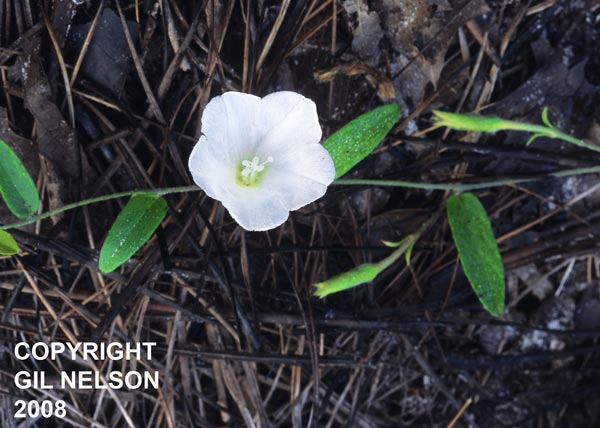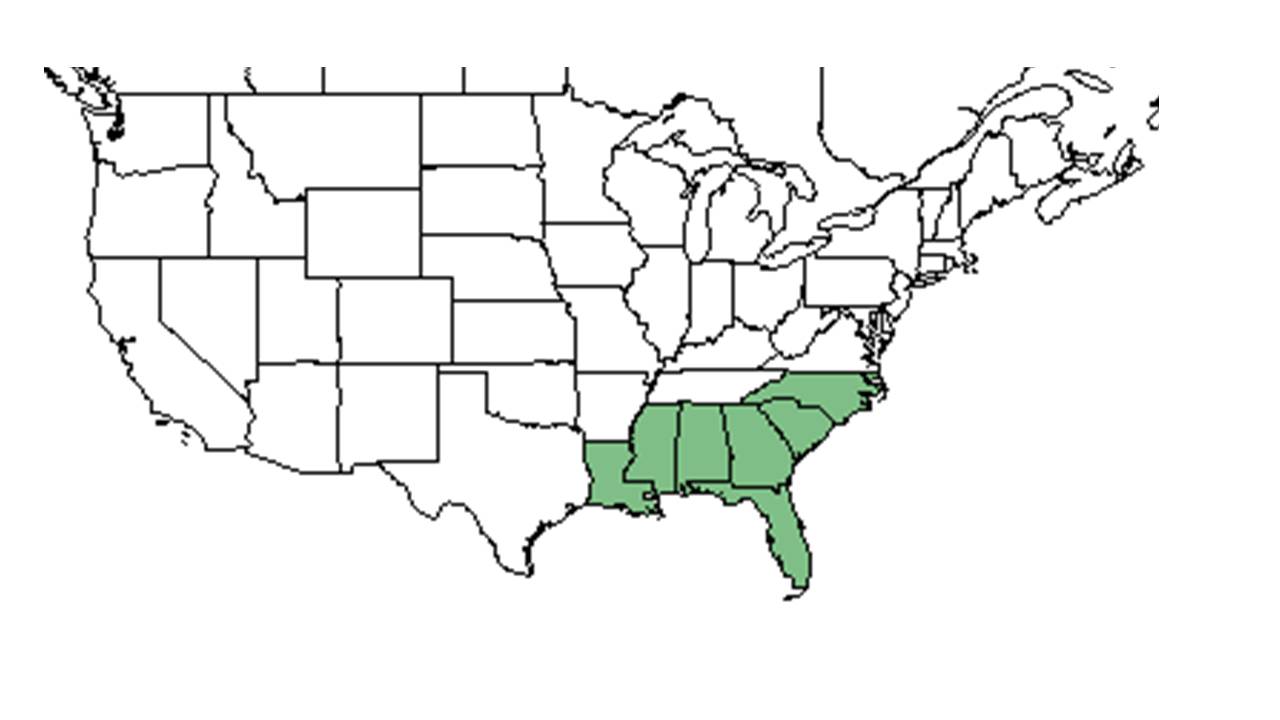Difference between revisions of "Stylisma patens"
| Line 44: | Line 44: | ||
<!--===Diseases and parasites===--> | <!--===Diseases and parasites===--> | ||
| − | ==Conservation and | + | ==Conservation, cultivation, and restoration== |
| − | == | + | |
| + | ==Cultural use== | ||
| + | |||
==Photo Gallery== | ==Photo Gallery== | ||
<gallery widths=180px> | <gallery widths=180px> | ||
</gallery> | </gallery> | ||
==References and notes== | ==References and notes== | ||
Revision as of 12:43, 9 June 2021
| Stylisma patens | |
|---|---|

| |
| Photo taken by Gil Nelson | |
| Scientific classification | |
| Kingdom: | Plantae |
| Division: | Magnoliophyta – Flowering plants |
| Class: | Magnoliopsida – Dicotyledons |
| Order: | Solanales |
| Family: | Convolvulaceae |
| Genus: | Stylisma |
| Species: | S. patens |
| Binomial name | |
| Stylisma patens (Desr.) Myint | |

| |
| Natural range of Stylisma patens from USDA NRCS Plants Database. | |
Common names: Coastal Plain dawnflower, Common dawnflower
Contents
Taxonomic notes
Synonyms: Bonamia patens (Desrousseaux) Shinners var. angustifolia (Nash) Shinners; S. angustifolia (Nash) House; Bonamia angustifolia (Nash) K.A. Wilson.[1]
Description
Stylisma patens does not have specialized underground storage units apart from its rhizomes.[2] Diaz-Toribio and Putz (2021) recorded this species to have an non-structural carbohydrate concentration of 159.4 mg/g (ranking 33 out of 100 species studied) and water content of 39.4% (ranking 5 out of 100 species studied).[2]
Distribution
Ecology
Habitat
In the Coastal Plains, S. patens has been documented in a longleaf pine-mixed oak-wiregrass association on a sandy hill slope; frequently burned, mature longleaf pine-wiregrass community; sand of open pine/oak flatwoods; sandhills; edge of longleaf-slash pine/wiregrass community; oak scrub; high turkey oak sandhill; cyrpess depressions in flatwoods; sandy upland pine-oak forests; turkey oak-wiregrass community; upland pinewoods; and longleaf pine-oak barrens.[3] In disturbed habitats it has been found in boggy powerline corridors, moderately disturbed longleaf pine restoration sites, dry powerline corridors, sandy roadsides, turkey oak barren clearing, bulldozed scrub oak sandhills, and gravel pits. Soil types include sand and loamy sand.[3] Associated species include Liatris, Erianthus, Gymnopogon, Rhynchospora, Paronychia, and Dyschoriste.[3]
Stylisma patens var. patens is frequent and abundant in the Panhandle Xeric Sandhills and North Florida Subxeric Sandhills community types as described in Carr et al. (2010).[4]
Phenology
S. patens has been observed flowering May through September with peak inflorescence in June and fruiting May through November.[3][5]
Seed dispersal
This species is thought to be dispersed by gravity.[6]
Conservation, cultivation, and restoration
Cultural use
Photo Gallery
References and notes
- ↑ Weakley, A.S. 2015. Flora of the southern and mid-atlantic states. Working Draf of 21 May 2015. University of North Carolina at Chapel Hill, Chapel Hill, North Carolina.
- ↑ 2.0 2.1 Diaz-Toribio, M.H. and F. E. Putz 2021. Underground carbohydrate stores and storage organs in fire-maintained longleaf pine savannas in Florida, USA. American Journal of Botany 108: 432-442.
- ↑ 3.0 3.1 3.2 3.3 Florida State University Robert K. Godfrey Herbarium database. URL: http://herbarium.bio.fsu.edu. Last accessed: July 2015. Collectors: R. A. Norris, Robert K. Godfrey, Loran C. Anderson, Cecil R Slaughter, Gil Nelson, W. W. Baker, R. R. Smith, T. Myint, R. Buchanan, S. W. Leonard, Robert Kral, Mable Kral, R. L. Lazor, Jean Wooten, Patricia Elliot, Sidney McDaniel, William Reese, Paul Redfearn, A. E. Radford, D. S. Correll, D. B. Ward, B. Moore, Walter S. Judd, A. F. Clewell, J. Beckner, Olga Lakela, E. West, Lovett E. Williams, S. B. Jones, M. L. Fernald, C. Ritchie Bell, O. M. Freeman. States and Counties: Florida: Bay, Calhoun, Citrus, Duval, Flagler, Franklin, Gadsden, Gilchrist, Gulf, Hernando, Hillsborough, Jackson, Jefferson, Lafayette, Leon, Liberty, Madison, Marion, Nassau, Putnam, Taylor, Wakulla, Washington. Compiled by Tall Timbers Research Station and Land Conservancy.
- ↑ Carr, S.C., K.M. Robertson, and R.K. Peet. 2010. A vegetation classification of fire-dependent pinelands of Florida. Castanea 75:153-189.
- ↑ Nelson, G. PanFlora: Plant data for the eastern United States with emphasis on the Southeastern Coastal Plains, Florida, and the Florida Panhandle. www.gilnelson.com/PanFlora/ Accessed: 14 DEC 2016
- ↑ Kirkman, L. Katherine. Unpublished database of seed dispersal mode of plants found in Coastal Plain longleaf pine-grasslands of the Jones Ecological Research Center, Georgia.